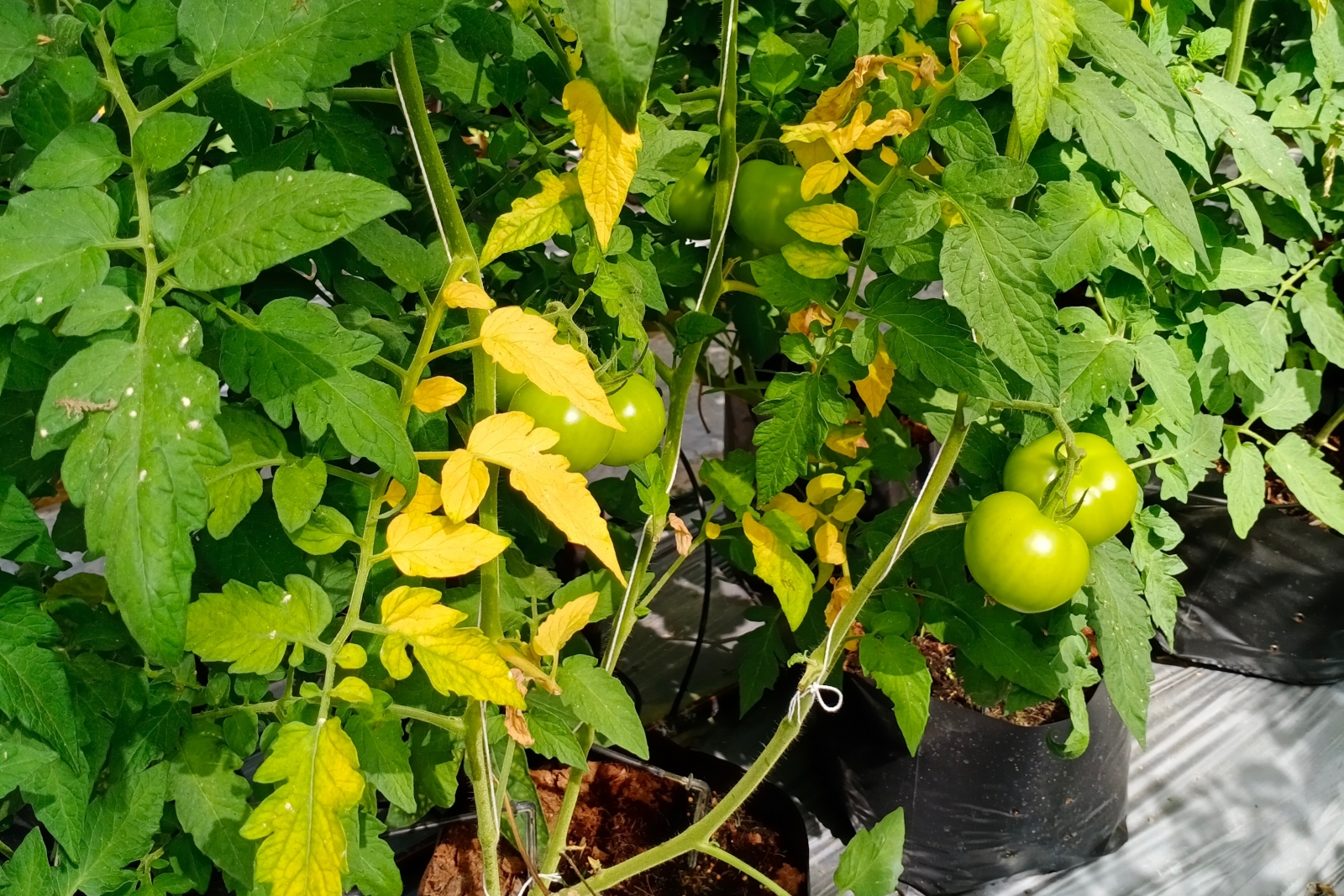Out for a garden walk, you look at your yellowing tomato plant and think, “It’s just an old leaf; it’s supposed to do that.” But then you see it on another plant and on new leaves, too. Wilting plants and yellowing leaves are hallmarks of fungal diseases like Fusarium wilt. It happens in summer as the temperatures rise. Healthy tomatoes, peppers, eggplants, cucurbits, beans, and even cabbages can be affected. If you notice something amiss and suspect wilt, read on!
What Is Fusarium Wilt?
Fusarium wilt is a fungal pathogen. Most Fusarium wilts home gardeners experience are caused by the species Fusarium oxysporum. They are further categorized by their preferred host. They are called host-specific forms, for which the scientific abbreviation is ‘f. sp’.
You may see F. oxysporum f. sp. melonis for the variety that attacks melons, or f.sp. Lycopersici for the variety that attacks tomatoes (the botanical name for tomatoes is Solanum lycopersicum)
To further complicate things, Fusarium wilt of tomatoes has three “races.” Plants may be susceptible to or resistant to one race of F. oxysporum but not another.
Fusarium fungi thrive when the soil temperatures warm in summer. About 75-85 degrees is their sweet spot. Soil temperatures below 70 will slow their growth.
How Does Fusarium Wilt Infect and Harm Plants?
Fusarium hyphae attack a plant by entering the water-conducting tissue in the roots called the xylem. Hyphae gain entry at wounds in the roots caused by harmful nematodes or other mechanisms like cultivation. Shallow roots are particularly susceptible. I like to blame the moles.
The fungus then clogs up the xylem, basically reducing the movement of water through the plant. Leaf yellowing is caused by toxins the fungus gives off.
Fusarium vs. Verticillium Wilt
If you have been a gardener for a while, you have probably heard of and maybe had problems with Verticillium wilt. This similar disease can infect many of the same plants, trees, and shrubs and is caused by fungus in the genus Verticillium.
Unfortunately, Fusarium wilt and Verticillium wilt present identical symptoms. The only way to positively identify the culprit is to send a sample to your state’s university plant laboratory for culturing. However, both affect plants in a similar fashion. The prevention and treatment options are also the same.
How Does Fusarium Wilt Spread?
Like any fungus, Fusarium reproduces by making spores. Some of these spores have rigid, thick walls and can live for years in the soil, persisting even in dry soil conditions.
Other spores are thin-walled and are spread in contaminated soil, splashed by water, or hitch a ride via infected soil that is not cleaned from garden tools. Check out this factsheet from the University of California for a more detailed look at how the fungus spreads.











